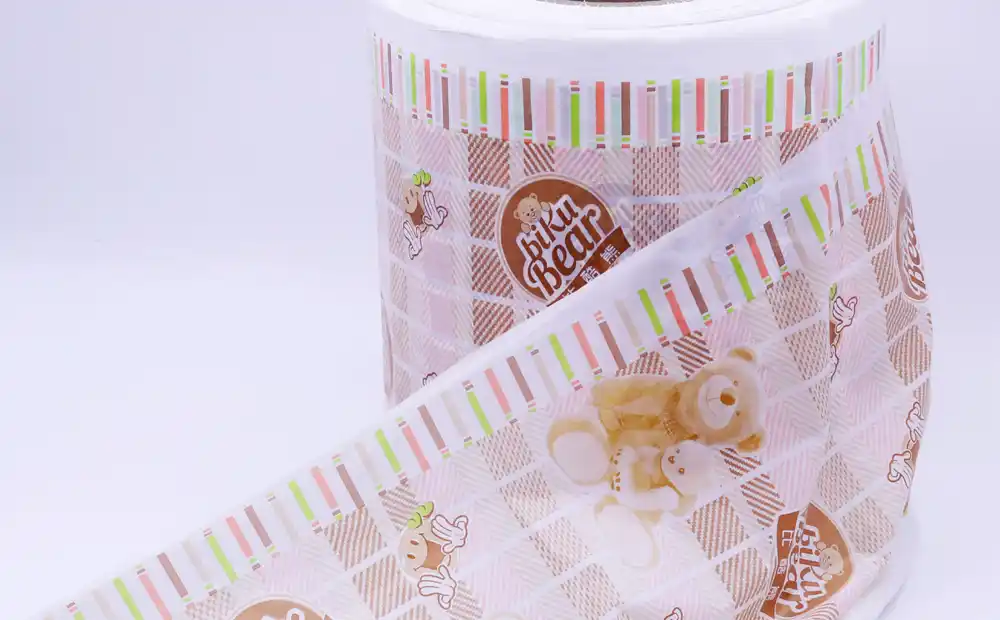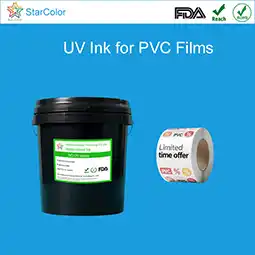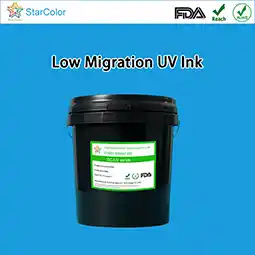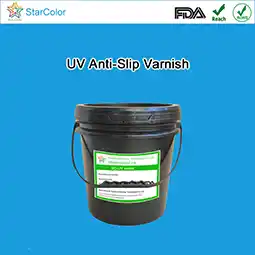Drying Issues and Solutions for Food-Grade Ink in PE Film Printing
Date: Apr 19 2024 From: Star Color Views:
Printing on polyethylene (PE) film is essential for flexible food packaging—think snack bags, frozen food wraps, and bakery liners. But anyone who’s worked with PE knows: it’s one of the most difficult substrates to print on.
When you add food-grade inks into the mix—especially water-based or solvent-free formulations—the challenge intensifies. The biggest hurdle? Drying performance.
Poor drying leads to:
- Smudging and blocking
- Reduced print quality
- Production slowdowns
- Increased waste
- Risk of contamination (if inks don’t fully cure)
At StarColor Ink, we’ve helped hundreds of converters overcome these issues. In this article, we’ll break down:
- Why PE film resists drying
- How food-grade inks complicate the process
- And most importantly—proven, field-tested solutions
1. Why Drying on PE Film Is So Challenging
PE film is chemically inert and non-porous. Unlike paper or cardboard, it doesn’t absorb ink—it only accepts it on the surface. This creates a perfect storm for drying issues.
Key Factors:
| Factor | Impact on Drying |
|---|---|
| Low Surface Energy (30–38 dynes/cm) | Poor ink adhesion → ink sits “on top,” slowing evaporation |
| Non-Porous Surface | No absorption → all solvent/water must evaporate |
| Heat Sensitivity | PE softens at ~80–100°C → limits drying temperature |
| High Humidity Sensitivity | Moisture slows water-based ink drying, causes fogging |
When using food-grade inks, the challenge is even greater. These inks avoid toxic solvents (like toluene or MEK), often relying on water, alcohols, or esters—which evaporate slower than aggressive solvents.

2. The Food-Grade Ink Drying Dilemma
Food-grade inks must comply with strict migration limits (e.g., EU 10/2011, Swiss Ordinance). This means:
- No high-VOC solvents
- Limited use of aggressive resins
- Higher water or alcohol content
While safer, these formulations often have:
- Slower evaporation rates
- Higher surface tension
- Lower film strength during drying
This leads to:
- Tailing and misting in flexo printing
- Blocking (layers sticking together)
- Incomplete curing → risk of odor or migration
3. Proven Solutions: How to Optimize Drying for Food-Grade Inks on PE
The good news? These challenges are solvable. Here are the most effective strategies, backed by real-world results.
3.1 Pre-Treatment: Boost Surface Energy
Before printing, increase PE’s surface energy to improve ink wetting and adhesion.
- Corona Treatment: Most common. Uses electrical discharge to oxidize the surface, raising dyne level to 42–48 dynes/cm.
- Flame Treatment: Effective for thicker films. Provides deeper modification.
- Plasma Treatment: For high-end applications. Offers precise, uniform activation.
StarColor Tip: Test dyne levels before every print run. Corona effects degrade over time—especially in high humidity.
3.2 Optimize Ink Formulation
Not all food-grade inks dry the same. Choose inks engineered for PE.
- Fast-Set Water-Based Inks: Use co-solvents (e.g., ethanol, IPA) to accelerate water evaporation.
- Hybrid Inks: Combine water with fast-evaporating, food-safe esters.
- Cross-Linking Technology: Forms a stronger film during drying, reducing blocking.
StarColor Advantage: Our SC-Flexo FoodSafe series uses a proprietary blend of food-approved resins and co-solvents, reducing drying time by up to 30% compared to standard water-based inks.
3.3 Dryer Optimization: Heat, Airflow, and IR
Standard dryers often fail on PE. Optimize for gentle, efficient evaporation.
- Temperature: Keep air temperature below 80°C to avoid film deformation.
- Air Velocity: Use high-velocity, laminar airflow to carry away moisture.
- Infrared (IR) Pre-Drying: Apply IR before hot air to initiate water evaporation without overheating.
- Zone Control: Use multi-zone dryers to gradually increase heat and avoid “skin formation.”
3.4 Additives for Faster Drying
Small adjustments can make a big difference:
- Defoamers: Prevent bubbles that trap moisture.
- Wetting Agents: Improve ink spread, reducing film thickness.
- Drying Accelerators: Catalyze evaporation (ensure food-safe certification).
3.5 Post-Printing Curing & Storage
Even after printing, drying continues.
- Cooling Rollers: Prevent blocking by stabilizing the ink film.
- Ventilated Storage: Store printed rolls in low-humidity, well-ventilated areas.
- Aging Time: Allow 24–48 hours for full migration stabilization (critical for compliance).
4. Case Study: Snack Bag Printing in Southeast Asia
Challenge: A major snack producer faced smudging and blocking issues when switching to food-grade water-based ink on PE film. Line speed dropped by 40%.
Solution:
- Implemented corona treatment (dyne level raised to 46).
- Switched to StarColor SC-Flexo FoodSafe WB-800 (fast-set, cross-linking).
- Upgraded dryer with IR pre-heat + high-velocity air.
- Added cooling rollers post-print.
Result:
- Line speed restored to 120 m/min
- Blocking eliminated
- Full compliance with EU and FDA standards
- Waste reduced by 65%
Conclusion: Drying Challenges Are Solvable—With the Right Ink & Process
Printing food-grade inks on PE film doesn’t have to mean slow production or quality compromises. The key is a holistic approach:
- Surface preparation
- Smart ink selection
- Dryer optimization
- Post-print handling
At StarColor Ink, we don’t just sell inks—we deliver complete drying solutions. Our food-grade inks are formulated specifically for difficult substrates like PE, ensuring safety, speed, and print excellence.
Struggling with drying on PE film?
Contact the StarColor Technical Team for free ink trials, dryer audits, and formulation recommendations—tailored to your press and production needs.
 RU
RU EN
EN CN
CN















